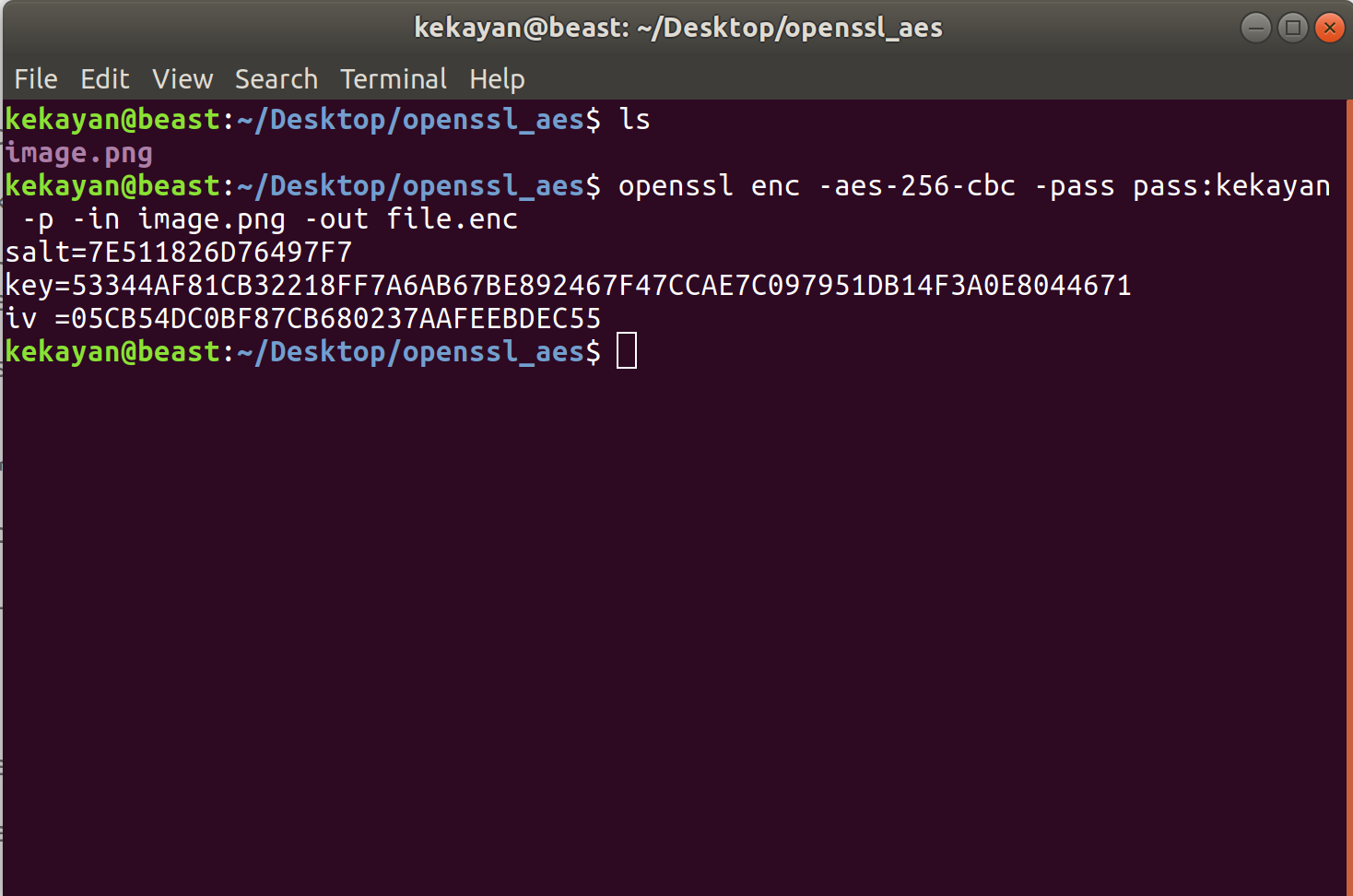Openssl Command To Generate A Key And Iv
- Openssl Create Private Key
- Openssl Command To Generate A Key And Iv Free
- Openssl Command To Generate A Key And Iv Form
- Openssl Command To Generate A Key And Iv Download
Oct 16, 2019 Generate a key using openssl rand, e.g. Openssl rand 32 -out keyfile. Encrypt the key file using openssl rsautl. Encrypt the data using openssl enc, using the generated key from step 1. Package the encrypted key file with the encrypted data. PHP OpenSSL functions opensslencrypt and openssldecrypt seem to use PKCS5/7 style padding for all symmetric ciphers. Upon this, you can't use them to encrypt using null byte padding or to decrypt null byte padded data. The developers of the wrapper forgot the padding scheme flags. This might be a noob question, but I couldn't find its answer anywhere online: why does an OpenSSL generated 256-bit AES key have 64 characters? The command I'm using to generate the key is: $ ope. For the best security, I recommend that you use the -K option, and randomly generate a new IV for each message. Send the IV along with the ciphertext. For example, you could append the ciphertext to the IV in one file, and then strip the IV from the beginning of the file when you are ready to decrypt. To generate a self-signed SSL certificate using the OpenSSL, complete the following steps: Write down the Common Name (CN) for your SSL Certificate. The CN is the fully qualified name for the system that uses the certificate. If you are using Dynamic DNS, your CN should have a.
A Pre-Shared Key (PSK) or also known as a shared secret is a string of characters that is used as an authentication key in cryptographic processes. A PSK is shared before being used and is held by both parties to the communication to authenticate each other, usually before other authentication methods such as usernames and passwords are applied.
Openssl Create Private Key
It is commonly used in different types of Virtual Private Network (VPN) connections, wireless networks in a type of encryption known as WPA-PSK (Wi-Fi Protected Access Pre-Shared Key) and WPA2-PSK, and also in the EAP (Extensible Authentication Protocol Pre-Shared Key), and many others authentication mechanisms.
In this article, we will show you different ways to generate a strong Pre-Shared Key in Linux distributions.
1. Using OpenSSL Command
Openssl Command To Generate A Key And Iv Free
OpenSSL is a well-known and widely-used command-line tool used to invoke the various cryptography functions of OpenSSL’s crypto library from the shell. To generate a strong PSK use its rand sub-command which generates pseudo-random bytes and filter it through base64 encodings as shown.
2. Using GPG Command

GPG is a command-line tool to provide digital encryption and signing services using the OpenPGP standard. You can use its --gen-random option to generate a strong PSK and filter it through base64 encoding as shown.

In the following commands, 1 or 2 is the quality level and 10, 20, 40, and 70 are the character counts.
Generate PSK Key Using GPG Command
3. Using Pseudorandom Number Generators
You can also use any of the pseudorandom number generators in Linux such as /dev/random or /dev/urandom, as follows. The -c option of the head command helps to generate the number of characters.
4. Using date and sha245sum Commands
Openssl Command To Generate A Key And Iv Form
The date and sha256sum command can be combined to create a strong PSK as follows.
Generate PSK Using date Command
Openssl Command To Generate A Key And Iv Download
Sims 3 late night key generator free. The above are some of the many ways of generating strong Pre-Shared Key in Linux. Do you know of any other methods? If yes, share it with us via the feedback form below.